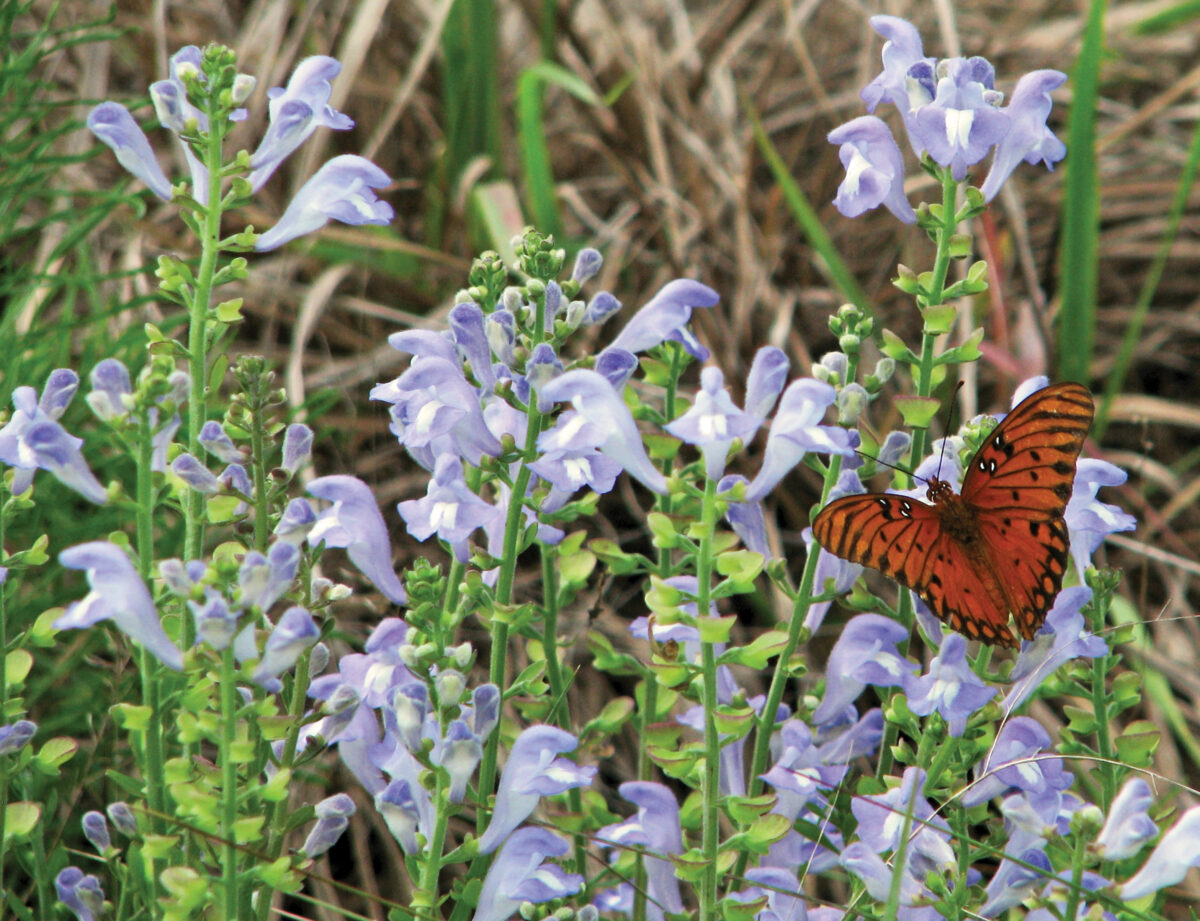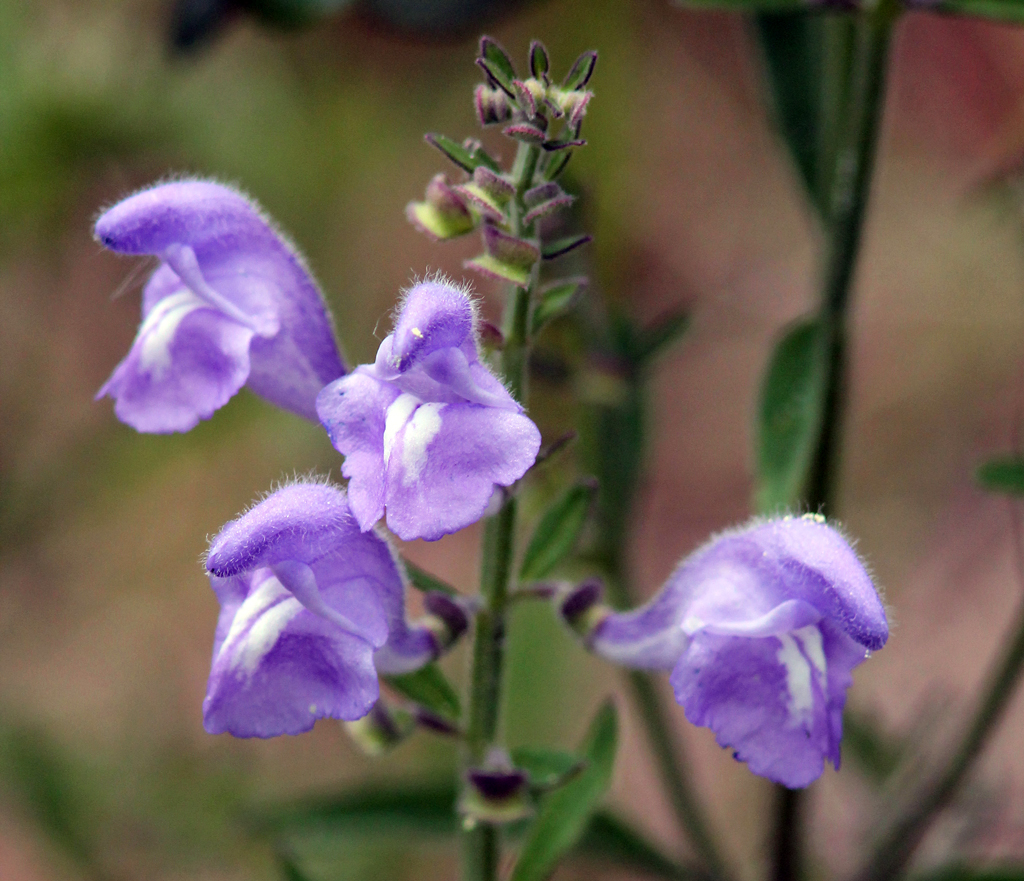Helmet skullcap
Pictured above: Helmet skullcap (Scutellaria integrifolia) by Mary Keim. Click on terms for botanical definitions. View post as a PDF.
Helmet skullcap is a diminutive yet showy wildflower that occurs naturally in sandhills, pine flatwoods and upland mixed forests, as well as along marsh and swamp edges. It typically blooms in late spring and summer, attracting a wide range of bees, including leafcutter, cuckoo and bumble bees. A few butterflies, such as the Gulf fritillary, Spicebush swallowtail and Eastern black swallowtail, sporadically visit the flower.

Helmet skullcap’s blue to violet flowers are two-lipped and resemble snapdragon blooms. The lower lip consists of three fused lobes with white splotched centers extending down the throat. Upper petals are fused and curved, forming a small hood or helmet-like structure. Flowers are born on terminal racemes in the axils of the bract-like upper leaves. The plant begins as a basal rosette of bright-green arrow-shaped leaves with coarsely toothed margins. From the rosette, many branched stems emerge. Stem leaves vary from elliptical to arrow-shaped and are oppositely arranged. Upper leaves are more narrow and have entire margins. Seeds are small, shiny and black and are produced in nutlets.
The genus Scutellaria is from the Latin scutella, or “dish,” possibly describing the lower plate-like petal. The species epithet integrifolia refers to its smooth leaf margins.
Family: Lamiaceae (Mint family)
Native range: Throughout Florida, except southernmost counties
To see where natural populations of Helmet skullcap have been vouchered, visit florida.plantatlas.usf.edu.
Lifespan: Perennial
Soil: Moist to dry, well-drained sandy soil
Exposure: Full sun to light shade
Growth habit: 12–24” tall
Propagation: Seed
Florida regions of landscape suitability: North, Central, South
Garden tips: Helmet skullcap is ideal for a mixed wildflower bed or wildflower border, or within a pond or rock garden. Plants die back in winter.
Helmet skullcap plants are occasionally available from nurseries that specialize in Florida native plants. Visit www.PlantRealFlorida.org to find a nursery in your area. Seeds may be available from the Florida Wildflower Growers Cooperative at www.FloridaWildflowers.com.
Learn more about Helmet skullcap from the Florida Native Plant Society and the Institute for Regional Conservation.

